Specialist Rose Growers Share 9 Common Growing Problems And Their Solutions

PERENNIALS > ROSES > PROBLEMS

Elizabeth is a Permaculture Garden Designer, Sustainability Consultant and Professional Writer, working as an advocate for positive change. She graduated from the University of St. Andrews with an MA in English and Philosophy and obtained a Diploma in Applied Permaculture Design from the Permaculture Association.
Reviewed By DAN ORI

Dan has over 27 years’ under his belt caring for plants and gardens. Working as a Horticultural Instructor and Consultant, he draws on a diverse range of experience that includes working as a Head Gardener, Tree Surgeon, Garden Centre Trouble Shooter, and writer of academic papers. Dan has a Level 3 Diploma in Horticulture and is currently a candidate for the RHS’s most prestigious award – The Master of Horticulture.
Contributions From PHILIP HARKNESS

With over 45 years as a Co-Owner of Harkness Roses, Philip has made a name for himself in the rose industry. His plant nursery won gold medals at the Chelsea Flower Show in 2021 and have bred various new roses, including ‘The Duke of Edinburgh’ rose, which was handed to the Late HRH Queen Elizabeth II to commemorate what would have been her late husband’s 100th birthday.

A Partner at Style Roses, Chris has worked in garden rose production for over 40 years and is the former Production & Marketing Manager for the Horticultural Department of Lincolnshire Field Products. Chris opened up his specialist nursery Style Roses in 1999 operating from Lincolnshire, specialising in standard and bush garden roses sold bare-root - and currently offers over 400 varieties of garden roses for sale.
IN THIS GUIDE
Roses are among our favourite plants here in the British Isles and for good reason.
They are great for many of our gardens, can be relatively low maintenance, they smell wonderful and also attract plenty of beneficial wildlife to our outside spaces.
Most of the time, roses planted in the right places in our gardens can thrive with little work and with not that much attention from us.
However, as with all plants, there are certain common problems that can arise when growing roses in your garden, no matter which of the many species and cultivars you grow.
The most common problems encountered when growing roses in the UK are:
- Aphids – small insects that cover the plant, sucking sap from stems, leaves and flowers.
- Rose black spot – a fungal issue identifiable via dark spots on the leaves of the plant.
- Rose dieback – another fungal issue which can cause visible damage or decay.
- Leaf rolling sawfly – sawflies which excrete chemicals that cause leaves to curl up.
- Powdery mildew – white powdery growth on the surface of leaves, which can inhibit growth.
- Root problems – decay of the roots, commonly caused by waterlogged conditions.
- Stem and branch issues – bumps or masses on the stems or branches of roses are commonly caused by crown gall or scale insects.
- Leaf discolouration, curling or wilting – could be caused by any number of insects or fungal issues.
- Rose blindness – a failure to flower, often caused by the plant being grown in too shady an area.
We dissect each of these issues in more detail below:
1) Aphids
Aphids can weaken roses by feeding on their sap and can also lead to the formation of sooty mould which affects the appearance of the plants.1Townsend, L. (n.d.). Aphids. Entomology at the University of Kentucky. Retrieved April 4, 2023, from https://entomology.ca.uky.edu/ef103
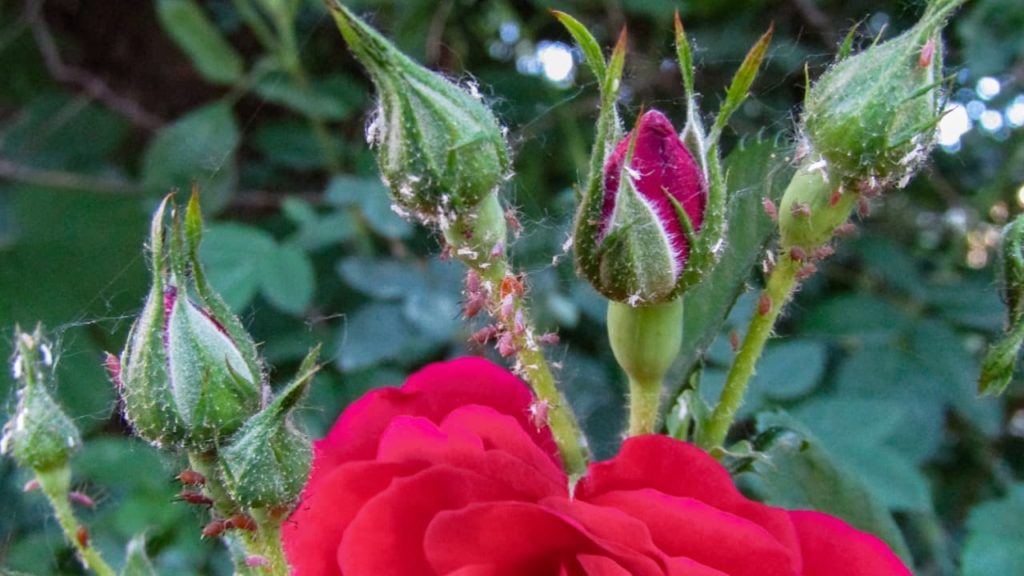
While a few aphids on roses are not usually an issue at all, a serious infestation can potentially become a problem.
The best way to deal with aphids in any organic garden is to keep their numbers in check by attracting plenty of creatures that eat aphids, like ladybirds and lacewing, to keep their population down.
“An alternative solution is to spray with something to kill the aphids,” shares Dan Ori, a Horticultural Consultant.
“A homemade solution like a weak mix of non-bio washing up liquid could be applied directly onto the aphids to suffocate them.
“It is important to note that when you spray it can be indiscriminate and you may harm other wildlife or the environment in the process.”
2) Black Spot
This is a serious fungal disease affecting rose leaves.
When this problem arises, deep purple or black spots develop on the leaves of a rose plant and these will then often drop off earlier than they should.
“If there is an attack of blackspot, it usually starts after the first flush of flowers, when the plant has been expending lots of energy producing blooms,” says Philip Harkness, an expert rose breeder and the Owner of Harkness Roses.
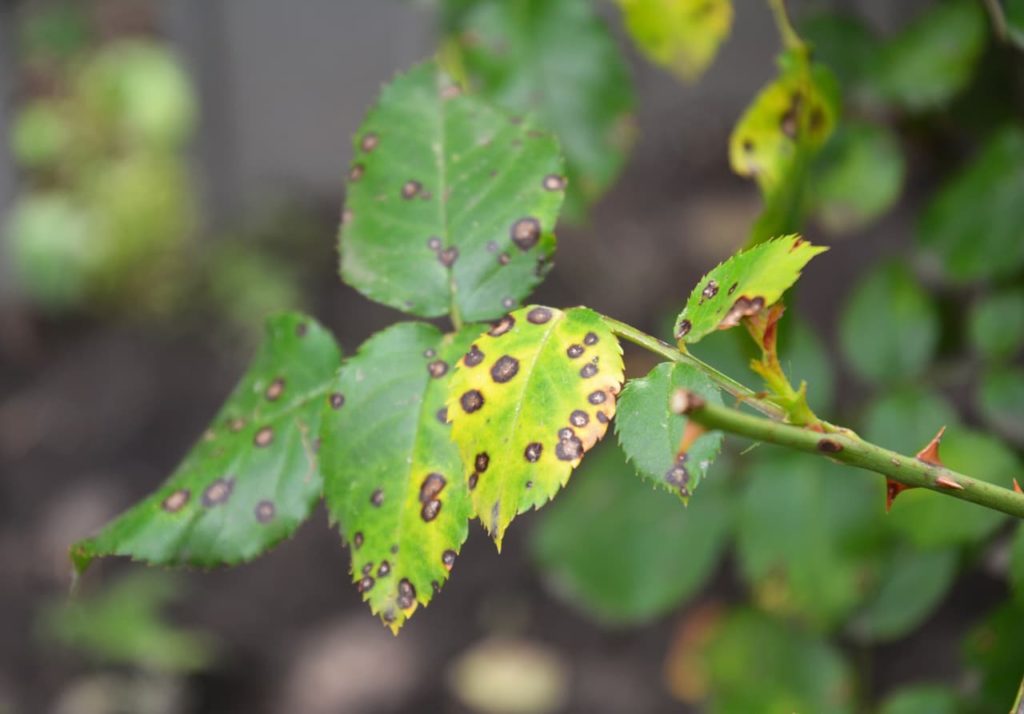
Sadly, badly affected plants can shed almost all of their leaves.
While we can delay the onset of this problem and reduce its spread somewhat by removing affected material quickly and pruning out affected stems and leaves, spores can still blow in from elsewhere, so it is difficult to eliminate this issue altogether.
Older species rose types are not as badly affected and are therefore better choices for areas where this is a persistent problem.
“Apart from variety selection and removal of infected material, you can thin out any dense growth to allow more airflow,” says Dan.
“Ultimately, the only control I have ever found to work effectively is to spray a fungicide.”
3) Dieback
Some degree of branch or stem dieback on roses is widespread and seen in most gardens.
However, in some areas, it can become a much more damaging issue.
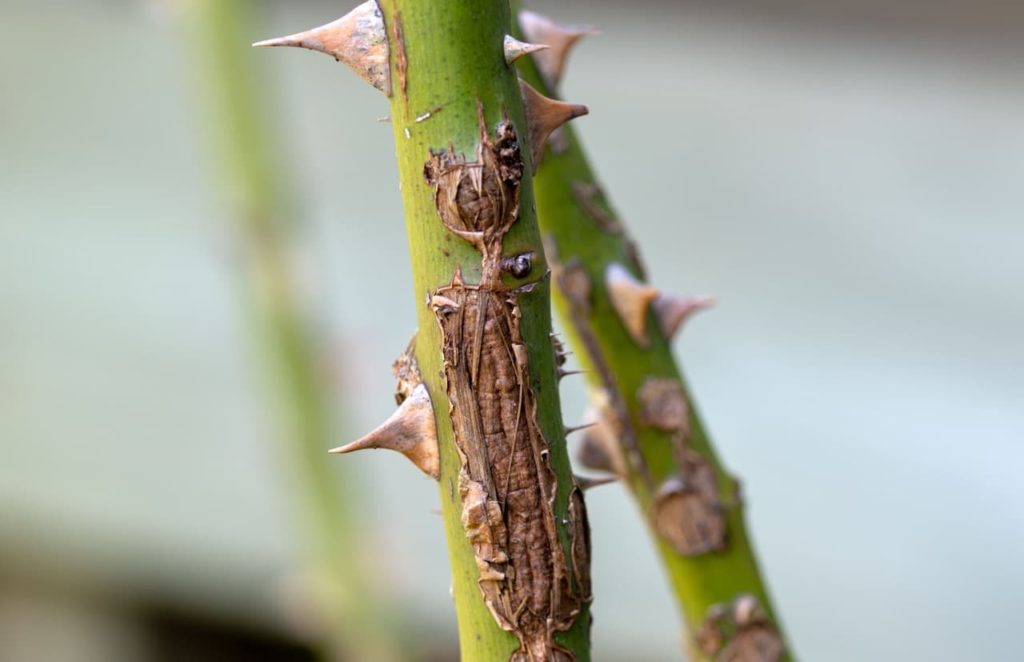
Rose dieback can occur due to:
- Planting roses where other roses were grown before.
- Fungal problems.
- Root damage or decay.
- Physical damage to branches.
- Severe insect infestation.
- Frost damage to young shoots in early spring.
- Poor pruning.
Dieback can then lead to further fungal issues and common diseases arising from it include grey mould and rose canker, which can find opportunities where existing damage is found.
4) Leaf-Rolling Sawfly
This sawfly causes the leaves on roses to roll up tightly, which mimics the damage that can be done to roses by weedkillers.
Female sawflies insert eggs into rose leaflets, secreting chemicals that cause the leaves to roll.2Rose leaf-rolling sawfly. (n.d.). Royal Horticultural Society. Retrieved April 4, 2023, from https://www.rhs.org.uk/biodiversity/rose-leaf-rolling-sawfly
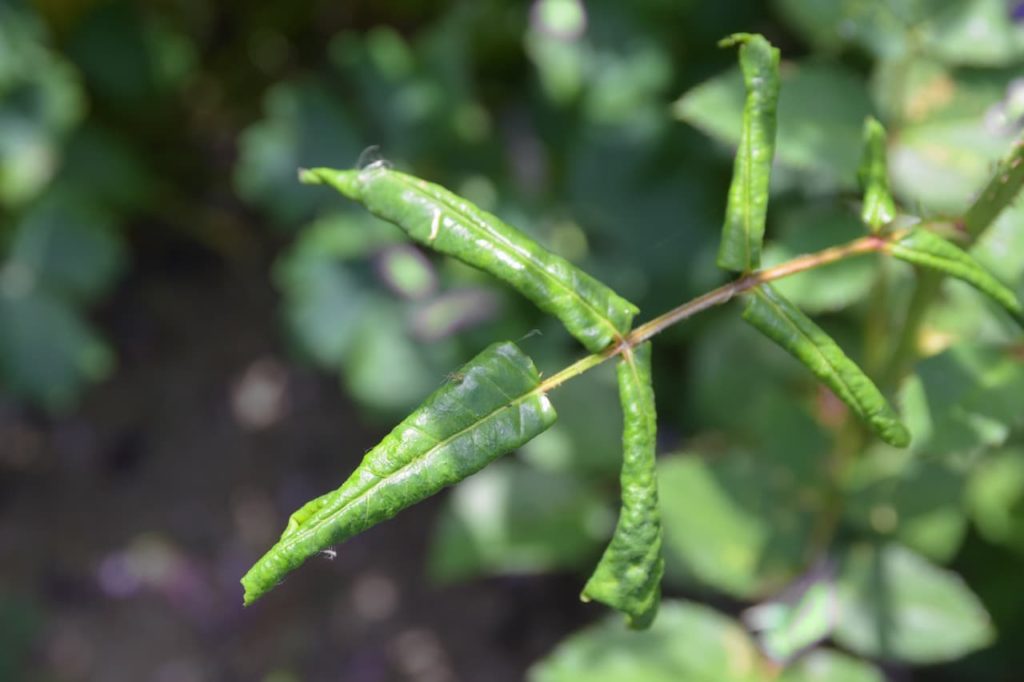
After some time, larvae hatch from these eggs and feed from inside the rolled-up leaves.
Typically, roses can withstand this and suffer no lasting damage due to these insects, so it is best to treat this pest as part of the natural biodiversity of your garden.
5) Powdery Mildew
Among the many fungal issues to which roses can fall prey, powdery mildew, with its conspicuous white growth on foliage, stems and flowers is another of the most common.
This problem can be unappealing and affect the visual beauty of your roses.
When a rose succumbs repeatedly and heavily to this problem, the plant’s vigour can be reduced.
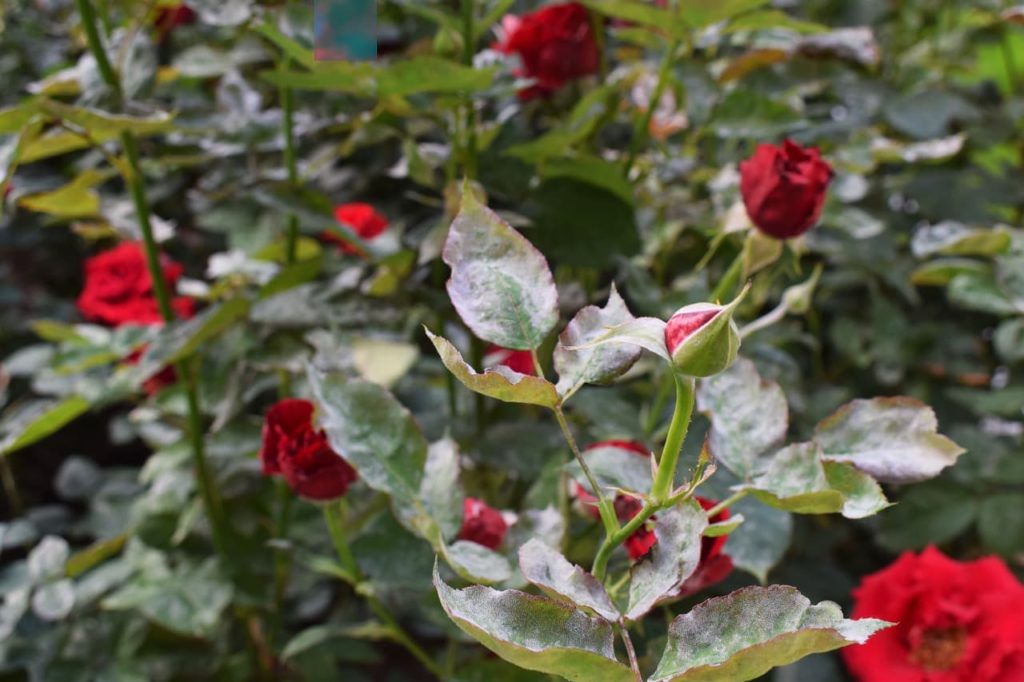
Making sure that the environmental conditions are optimal for the roses that you are growing and ensuring good air circulation around your plants can help reduce the chances of a severe infection taking hold.
Ensuring healthy soil, feeding to promote strong growth and managing humidity by spacing and pruning correctly are all also important in helping to reduce the chances of this problem occurring or becoming severe.
6) Root Problems
If there is a decay of the roots of a rose, this can be due to an attack by several different diseases or simply a result of drainage issues that have led to waterlogging.
Occasionally, hard frosts can cause root death on roses kept in containers.
One disease that can affect both roses in containers and those in the ground is Phytophthora root rot.
This is unfortunately quite a common problem.
In the soil, roses are also unfortunately one of many plants susceptible to honey fungus.
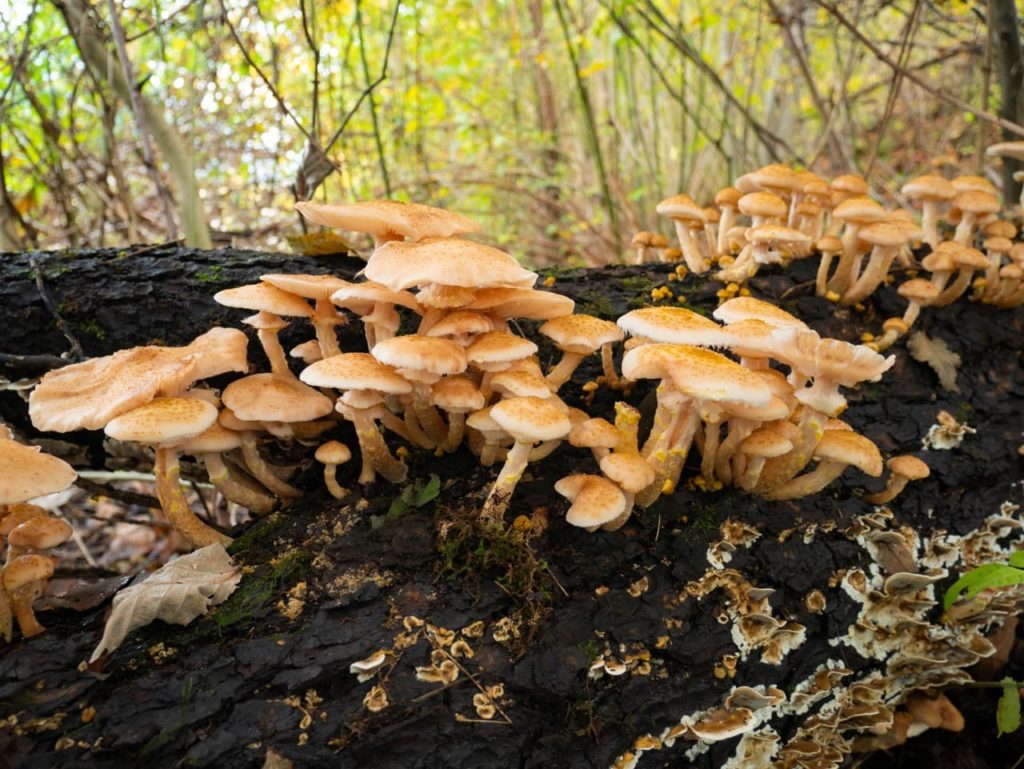
If a rose is newly planted in an area where there were roses before, it may fail to root out as it should.
This is a problem called Replant Diseases, sometimes referred to as ‘rose sickness’.3Replant Disease. (2020, January 1). Science Direct; Elsevier BV. https://doi.org/10.1016/b978-0-12-818732-6.00023-x
If this is the case, these plants will not establish well and will lack the thin and delicate feeder roots that they should have.
It is best to avoid potential pathogens or pests and change out the topsoil in an area or, better yet, plant roses elsewhere where they have not previously been grown.
Chris Styles from Style Roses elaborates on this problem:
“If you continue to get disease issues with particular roses year after year, dig them up and dispose of them,” says Chris.
“Then, replace with new ones and use Mycorrhizal fungi granules (Rootgrow) at the time of planting to prevent rose replant sickness.”
7) Stem & Branch Problems
We have already discussed some of the many potential causes of stem and branch dieback of roses, which, as mentioned above, is fairly common on a smaller scale.
“As with any living organism, roses may suffer an attack and fungi (blackspot, mildew and rust) are the most common adversaries,” says Philip.
Dieback pathogens can worsen existing issues and exacerbate any problems.
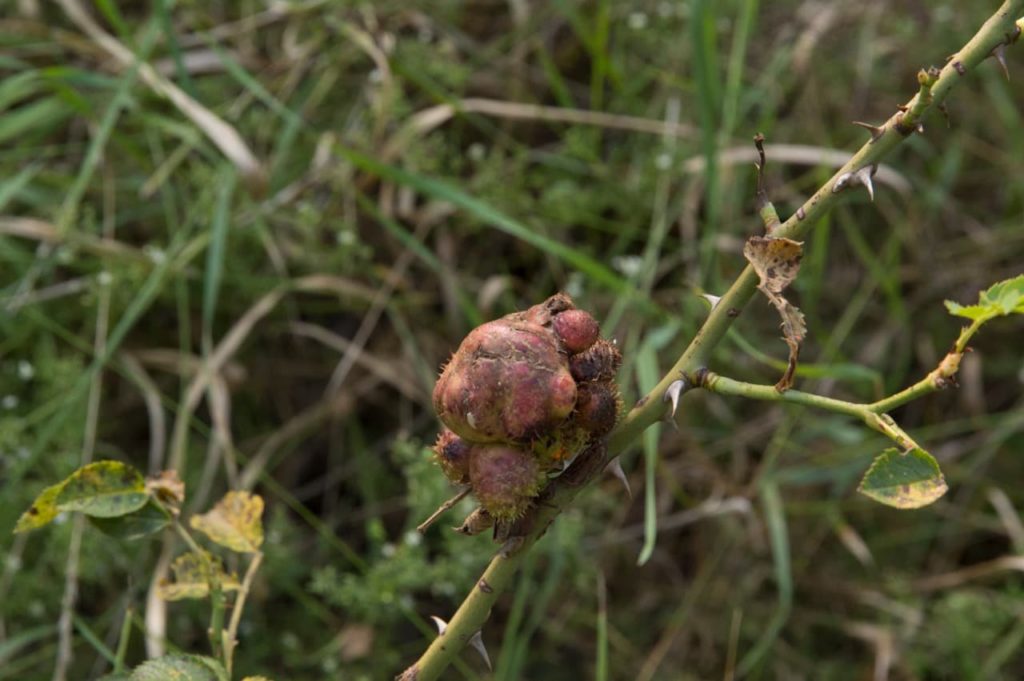
If you see a large knobbly mass at the base of the stem on a rose, this is likely to be a bacterial disease called crown gall.
As a result of this problem, the roots can also be impacted.
If the branches and stems on a rose feature small, brown bumps that look like limpets, you are looking at an infestation of scale insects.
Brown scale is most common on roses and one called scurfy rose scale also affects the stems, leaving round, flat, whitish markings.
8) Problems With Leaves
A whitish-grey powdery growth on the leaves of a rose is powdery mildew.
If rose leaves are sticky, shiny and have a black growth, this is down to aphids, honeydew and sooty mould.
Aside from these things, there are also other issues with leaves on roses that might arise.
For example, if large larvae are eating the leaves, this could be a large rose sawfly.

If leaves have neat semi-circular or oval holes, this could be leaf-cutter bees.
If there are large yellow spots on the top of leaves and orange dots beneath, this is rose rust, which is a fungal infection.
The orange pustules will be replaced by black ones in the late summer or autumn.
If leaves are discoloured, small and thin, this could be due to a viral infection or, more commonly, a result of contamination with glyphosate (a weedkiller) the season prior.
9) Problems With Rose Flowers
If most of the branches on a rose fail to flower, this is often the result of rose blindness.
This is a poorly understood disorder that diverts the plant’s energy so that it fails to produce blooms.

The cause is unknown, but weather conditions might be involved or it might be due to the plant being grown in too shady an area.
Proper pruning, fertilising, mulching and ensuring roses are in a sunny and open position may help.
References
- 1Townsend, L. (n.d.). Aphids. Entomology at the University of Kentucky. Retrieved April 4, 2023, from https://entomology.ca.uky.edu/ef103
- 2Rose leaf-rolling sawfly. (n.d.). Royal Horticultural Society. Retrieved April 4, 2023, from https://www.rhs.org.uk/biodiversity/rose-leaf-rolling-sawfly
- 3Replant Disease. (2020, January 1). Science Direct; Elsevier BV. https://doi.org/10.1016/b978-0-12-818732-6.00023-x
